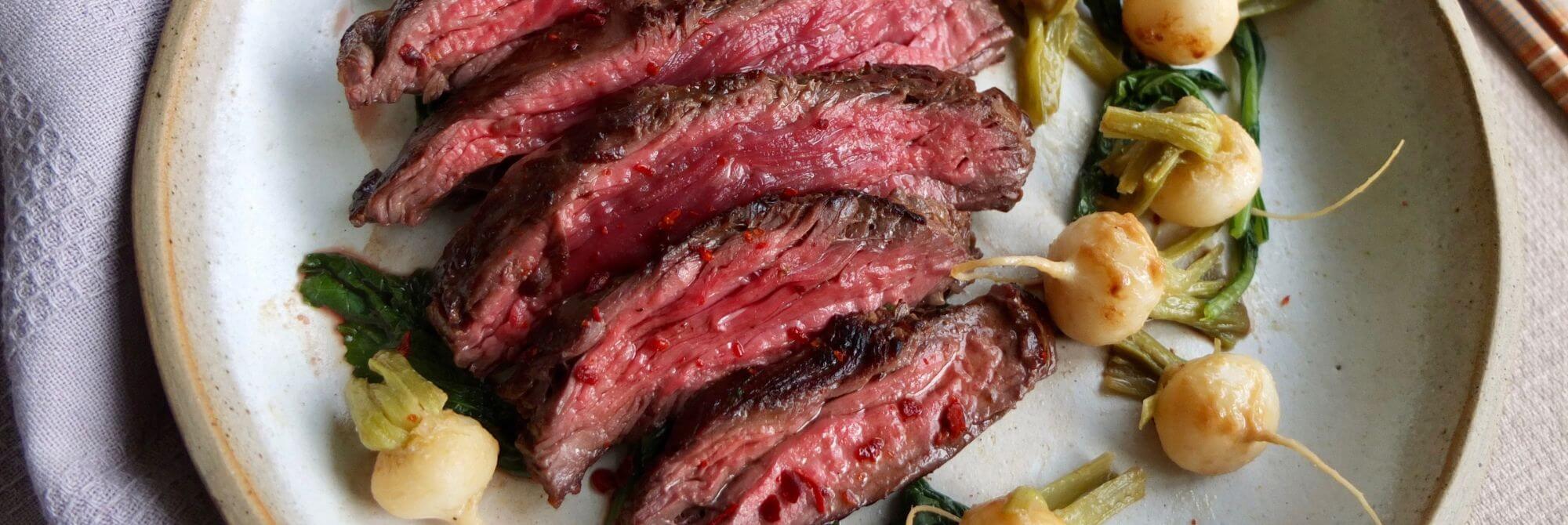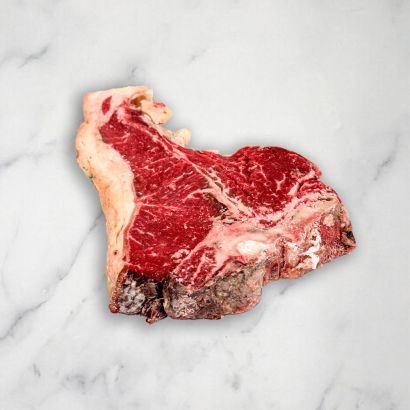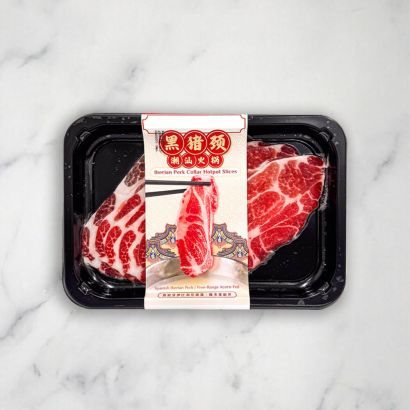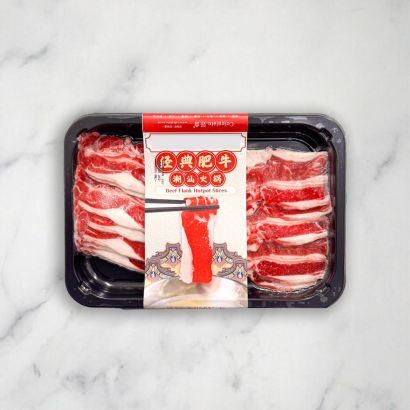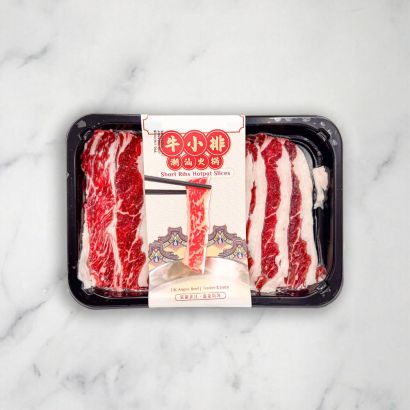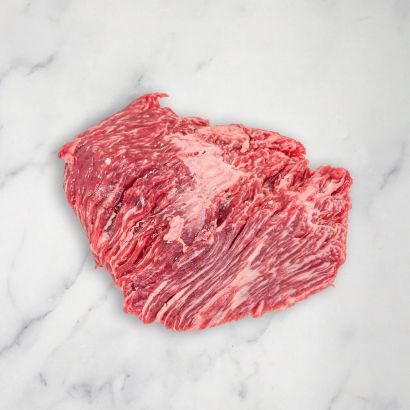 Wagyu 'Bavette' Flank Steak, BMS 6-7, Frozen, +/-500g£29.95Introducing Wagyu Bavette Flank Steak, BMS 6-7! Wagyu Bavette flank steak, graded BMS 6-7, offers a unique culinary experience, thanks to its distinctive marbling and high fat content. Originating from the flank or skirt of the cow, this Wagyu steak is renowned for its rich, buttery flavour and m...Out of stock
Wagyu 'Bavette' Flank Steak, BMS 6-7, Frozen, +/-500g£29.95Introducing Wagyu Bavette Flank Steak, BMS 6-7! Wagyu Bavette flank steak, graded BMS 6-7, offers a unique culinary experience, thanks to its distinctive marbling and high fat content. Originating from the flank or skirt of the cow, this Wagyu steak is renowned for its rich, buttery flavour and m...Out of stock
Wagyu Bavette is a must-try for any meat enthusiast. This flavourful cut, originating from the flank or skirt of the cow, is celebrated for its rich marbling, tender texture and unparalleled taste. Whether you’re grilling on the BBQ or searing in a pan, Wagyu Bavette delivers a premium dining experience.
What is Wagyu Bavette?
Wagyu Bavette, also known as Wagyu steak bavette or Wagyu bavette steak, comes from the highly marbled flank of the cow. This cut is prized for its high-fat content, which ensures a rich, juicy flavour in every bite.
Wagyu itself is a breed of Japanese cattle, with the name literally translating to 'Japanese beef'. Renowned for its superior marbling and buttery texture, Wagyu beef is a global delicacy that originated in Japan. For years, exporting Wagyu was banned, underscoring its cultural and economic significance.
Why Choose Wagyu Bavette?
- A Cut Perfect for BBQ: Wagyu Bavette is a fantastic choice for barbecues. Its high-fat content not only enhances the flavour but also ensures the meat stays moist during cooking. The natural marbling caramelises beautifully on the grill, making it a crowd-pleaser at any outdoor gathering.
- Exceptional Flavour at a Great Price: This cut is especially popular in France, where it’s loved for its excellent flavour and reasonable price. While Wagyu bavette steak offers a premium experience, it remains an accessible option compared to other Wagyu cuts like ribeye or sirloin.
- Tender and Versatile: Traditionally, steak bavettes are diced or minced due to their tenderness, but they’re equally delectable when cooked as a whole steak. When flash-fried or quickly grilled, the Wagyu bavette develops a perfect crust while maintaining its soft, juicy interior. Keep in mind, this cut is best-enjoyed medium-rare for optimal texture and flavor.
How to Cook Wagyu Bavette
Cooking Wagyu bavette steak is simple yet rewarding. Here are some tips:
- Quick Searing: Heat your grill or pan to high heat. Sear the steak on each side for 2-3 minutes, ensuring the interior stays medium-rare.
- Resting: Allow the steak to rest for 5-7 minutes after cooking to lock in the juices.
- Slicing: Always slice against the grain to maximize tenderness and enhance the eating experience.
For those who prefer alternatives, consider exploring other Wagyu cuts like ribeye, sirloin or even Wagyu burgers for a different flavour profile.
What Makes Wagyu Bavette Unique?
The exceptional quality of Wagyu beef bavette lies in its fat marbling, which melts during cooking to create a luscious flavour and buttery texture. The cut’s rich history and international popularity only add to its appeal. It’s a testament to how simplicity and quality can result in an extraordinary culinary experience.
Wagyu Bavette FAQs
1. Is Wagyu Bavette Tender?
Yes, Wagyu bavette is tender compared to bavette cuts from other types of beef. Bavette comes from the bottom sirloin and is typically known for its robust beefy flavour. In standard beef, it can be somewhat chewy if not prepared correctly, but Wagyu's abundant marbling significantly enhances its tenderness and juiciness.
2. Can Wagyu Bavette Steak Be Undercooked?
Yes, Wagyu bavette steak can be undercooked, but like any beef, the level of doneness should align with personal preference.
3. Is Wagyu Bavette Steak Good for BBQ?
Absolutely! The high-fat content of Wagyu Bavette makes it ideal for BBQ. The marbling melts during grilling, enhancing the flavour and keeping the meat juicy.
4. What to Serve Wagyu Bavette With?
Serve Wagyu bavette with flavourful sides like chimichurri, roasted vegetables or a tangy arugula salad and complement it with a robust red wine such as Malbec or Zinfandel.

